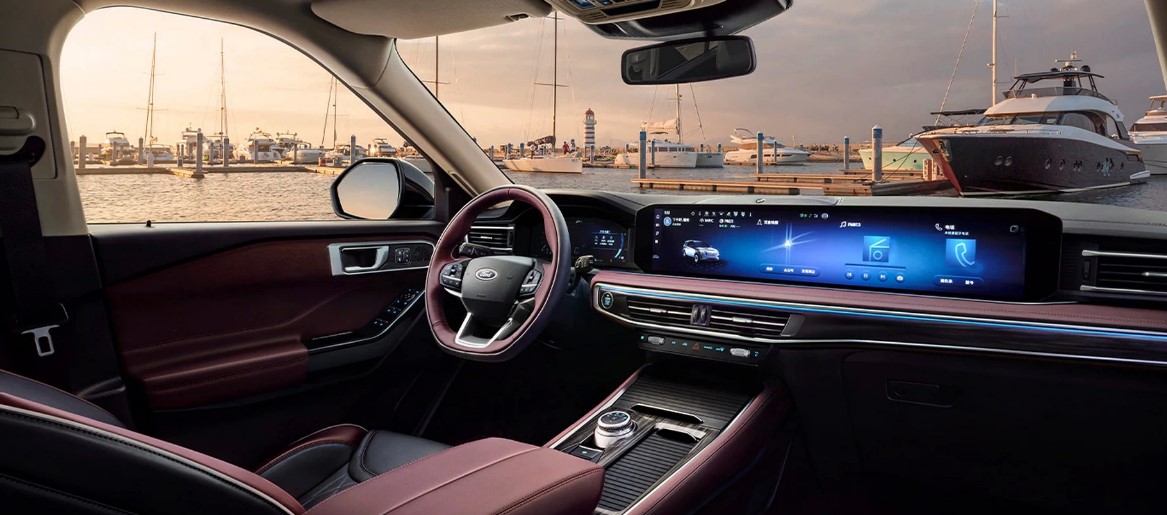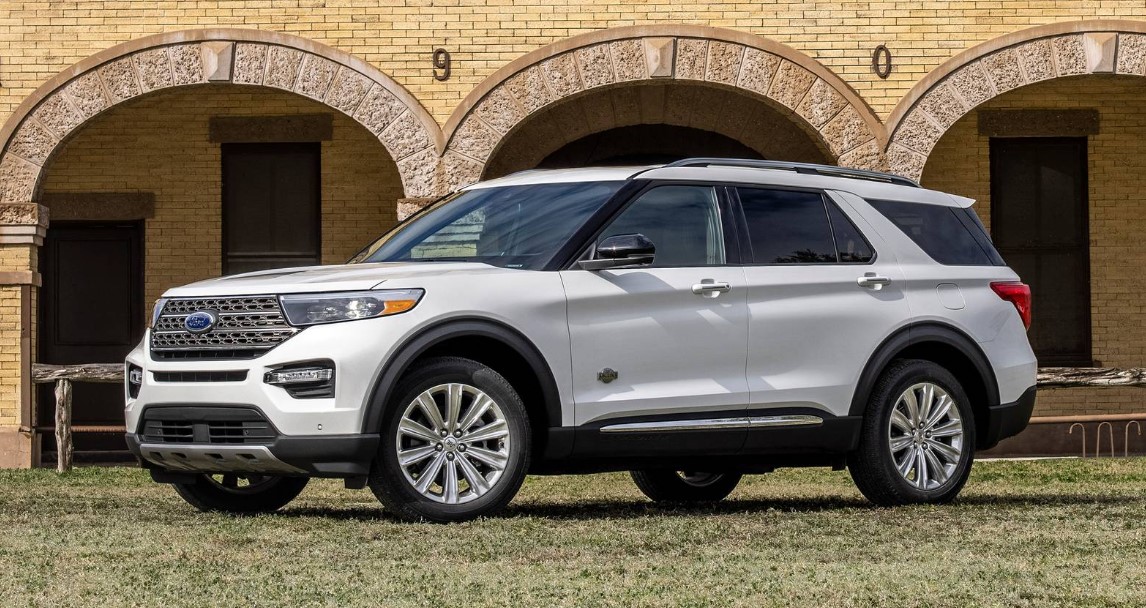Table of Contents
2024 Ford Explorer Redesign: Will the Ford Explorer be Redesigned in 2024? – It should not come as a surprise that the 2024 Ford Explorer will get a facelift, considering that the 2023 model will go on as a carryover and there are no plans for a significant redesign until the 2026 model year. Ford has not been very forthcoming with information on the specifics, but the following is what we currently know.

Redesign
The sporty ST trim now comes standard with rear-wheel drive, and a trim level called ST-Line, which is intended to simulate the performance of the sporty ST trim, was added for the 2022 model year. However, the 2023 model will not see any significant improvements. It is reasonable to assume that Ford will introduce some new features or modify existing ones for the 2024 model, and it looks that this will be the case based on the spy images that have begun to circulate. The prototypes of the 2024 model have been well-concealed; nevertheless, recent spy photographs that were released by Motor1 showed a wider grille and headlights, and it is expected that other minor adjustments will also be made.
It seems that the ST or Timberline trim levels are being used for the test mules that have been seen. This last point is especially noteworthy given that we were uncertain whether or not the off-road-focused Explorer variant will be produced beyond 2024. It will continue to compete against other off-road-oriented vehicles, such as the Jeep Cherokee Trailhawk and the Subaru Outback Wilderness.
To this point, we haven’t received any information on any powertrain improvements. The current generation of the Ford Explorer comes standard with the same 2.3-liter turbocharged inline-four that powers a number of other Ford vehicles and produces 300 horsepower. The V6 EcoBoost engine that is standard in more luxurious grades can produce up to 400 horsepower in the ST.
In addition to its normally aspirated and turbocharged versions, the Hybrid V6 may also be turbocharged. An all-electric Explorer model was also hinted at, but because of the high demand for the Mustang Mach-e, manufacturing of the electric vehicle variants of the Explorer (and the Lincoln Aviator equivalent) has been postponed until late 2024.
Although it is far from certain that we will receive the same features, Ford has already unveiled the upgrades that will be made to the Explorer for the Chinese market. A bigger grille, an LED lightbar for the daytime running lights, and a Herculean 27-inch infotainment screen are some of the noteworthy alterations that have been made here.
Although we do not have a lot of information about the 2024 Explorer yet, we will continue to add new details on this page as they become available. In the meantime, however, you should not anticipate any significant changes until the redesign.

Review
Everything about the 2024 Ford Explorer Redesign is exactly the same as the 2022 model. You may learn about the modifications and additions that Ford made to their product selection over the course of the last year by reading the information provided on this page.
We are thankful that Ford launched the Timberline and King Ranch variants last year (both of which are featured above) since both give a much-needed burst of color and visual appeal to what is otherwise a very boring interior. Both of these variations are pictured above. When the large touchscreen with a vertical orientation is attached to the dashboard, some people may even consider it to be very unsightly. It seems to be of a far lower quality than a Kia Telluride, Hyundai Palisade, or Toyota Highlander, and the quality of the materials does nothing to modify that view.
Every single Explorer is outfitted with Ford’s Sync3 infotainment system as standard equipment. It reacts effectively to inputs and swiping movements, symbols can be clearly seen and touched, and the feature content is generally substantial for this market category. This includes Apple CarPlay and Android Auto; however, utilizing Sync3’s native controls to navigate or play music from a smartphone is also allowed.
Even though every Explorer includes Sync3, each one has a unique interface that controls the feature. The additional storage space for smartphones is a welcome addition, and the regular touchscreen, which is 8 inches in size, is simple to view and access. This issue is resolved with the 10.1-inch touchscreen that has a vertical orientation and is available as an upgrade on the Platinum and King Ranch trims levels. Worse so, the larger screen doesn’t really boost functioning in the way that one would anticipate it would. The 12.3-inch digital instrument panel that is standard on the three top trims is by far the most successful aspect of the vehicle, and it even changes its appearance depending on which of the seven different driving modes the driver chooses.
The current iteration of the Explorer is bigger than both its ancestor and the majority of its rivals. Only the enormous Chevrolet Traverse and the Jeep Grand Cherokee L are longer than this vehicle, which measures 198.8 inches overall. When driving it, thankfully, it doesn’t seem quite as large as it really is.
The measurements of the inside of the Explorer suggest that the second and third-row legroom are better than average, but not the greatest in the class. In reality, we found it to have far less space than its measurements would lead one to believe, particularly in the third row. Although there is a lot of headroom in the rear, much of it is because the seat is positioned at a low level. Therefore, even if there is more physical space between the seats, your passengers, including children, are less likely to be comfortable since their buttocks will be too near to the ground and their legs will have less support. They will have a more positive experience in a Hyundai Palisade, Chevrolet Traverse, or Grand Cherokee L.

Despite this, the cargo space is just as accommodating as one would expect given its proportions. Behind the elevated third row, there is more room than in most rivals’ vehicles thanks to a floor panel that can be removed. The differences between competitors in terms of maximum cargo space are negligible; however, those extra cubes behind the way back could mean the difference between bringing all of your luggage, purchasing a roof box, or making someone sit with a duffle bag on their lap for three hours. All of the competitors’ rows must be lowered.